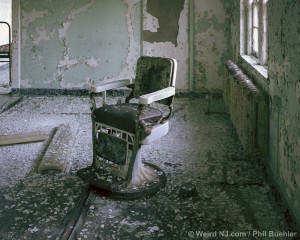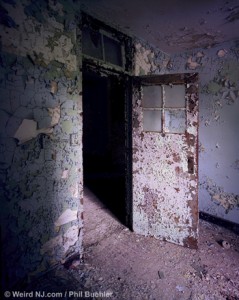Located in MorrisPlains, GreystoneParkPsychiatric Hospital has been abandoned for several years, falling into severe disrepair after over a century of use. The main building, the Kirkbride Building, is now one of the few buildings on the grounds still standing, and is now scheduled for demolition sometime this fall, although a date has yet to be announced by the township. The facility itself is fairly well-known in the world of deserted psychiatric care centers, although not for great achievements in medical advancement, but for its notorious overcrowding and mistreatment of its patients over the decades.
Dorothea Dix, the famous historical nurse who pushed for better care for patients in mental healthcare facilities during her era, originally lobbied for the facility to be erected after the crowded facility in Trenton was in dire need of relief. Opening in 1876, it was originally named the New Jersey Lunatic Asylum at Morristown, until 1924, when it was renamed GreystoneParkPsychiatric Hospital. It was designed by Trenton State Asylum Superintendent Horace Buttolph, Thomas Story Kirkbride, (the main building was named after him) and Samuel Sloan.
The theory in the then “innovative” design was that the patients who were cared for there would live in comfort. There were decently furnished dorm rooms, recreation and exercise areas, parlors, and the patients were often encouraged to enjoy the outdoors if they so desired.
 The staff believed in the curability of patients, although they used several controversial methods in attempt to achieve their goal, such as using electroshock therapy, coma-inducing insulin shock therapy, intense hydrotherapy, and in the early twentieth century, some patients had their teeth, tonsils, and thyroid or prostate glands removed. While they seem vicious and cruel to the modern eye, these were unfortunately accepted methods of treatment in those years.
The staff believed in the curability of patients, although they used several controversial methods in attempt to achieve their goal, such as using electroshock therapy, coma-inducing insulin shock therapy, intense hydrotherapy, and in the early twentieth century, some patients had their teeth, tonsils, and thyroid or prostate glands removed. While they seem vicious and cruel to the modern eye, these were unfortunately accepted methods of treatment in those years.
The facility became quickly overpopulated, and the staff resorted to turning the parlor, recreation rooms, several administrative rooms, and the storage attic into dorm rooms for the patients. A facility meant for 600 then housed over 800. As the years passed, there were additions made to the original building to compensate and expand the dorms, and at one point in the 1950’s, there were over 8,000 patients living in the cramped facility, mainly a result of an influx of many World War II veterans suffering from Post Traumatic Stress Disorder.
Out of the thousands of people hospitalized over the decades, one name stands out among the rest. Woody Gurthie, a popular folk signer of the 1950’s was a longtime resident at Greytone as a result of terminal Huntington’s disease during the late fifties, (although he was misdiagnosed as a Paranoid Schizophrenic by doctors, as this was a time where scientists did not have a very clear way of determining mental illness in its exactness). He was the one who began referencing Greystone as “Gravestone”, as it quite accurately described the experiences of the patients staying in the hospital.
As the building became older in the 1990’s, and problems arose as staff to patient abuse and patient to patient violence increased, the pressure was on GreystonePark to maintain the facility’s diminishing dignity. They were sadly unsuccessful to repair the issues at hand, and measures had to be taken for the patients’ well-being, as several had committed suicide during this time of malpractice in the facility. Patients then began moving out of the Kirkbride building and were living in the other buildings around the grounds, which have now been closed and demolished since 2008. An entirely separate facility is now housing patients nearby to the original location of the Kirkbride building.
The main building now lays empty and falling into immense disrepair. When it was announced last year that the building was scheduled for demolition, a few people from the area tried to save the historic facility, but there was simply no interest in saving a hospital with such a dark background.
The Kirkbride building at GreystonePark is now technically inaccessible to the public; however, there are many accounts of break-ins by those who are curious to see what remains in the abandoned building. It is monitored by the local police as the building is extremely unsafe to venture into without authorization.







